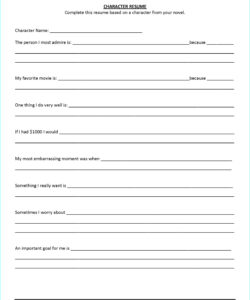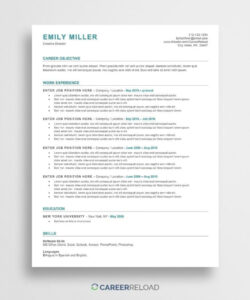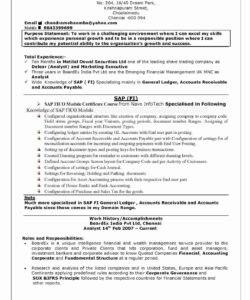When it comes to writing a resume in Spanish, it’s important to know the right words to use. Whether you’re applying for a job in Spain or Latin America, the following guide will help you create a professional and effective resume.
First, let’s start with the basics. The word “resume” in Spanish is “currículum vitae”, which is often abbreviated as “CV”. In some countries, such as Mexico, the term “hoja de vida” is also used.
What to Include in Your Spanish Resume
Just like in English, your Spanish resume should include your personal information, work experience, education, and skills. However, there are a few differences to keep in mind.
For example, in Spain, it’s common to include a photo of yourself on your resume. This is not the case in Latin America, where it’s generally considered unprofessional.
Another difference is the order in which you list your information. In Spain, it’s common to start with your work experience, while in Latin America, it’s more common to start with your education.
Here’s a breakdown of what to include in your Spanish resume:
Personal Information
Your personal information should include your full name, address, phone number, and email address. In Spain, it’s also common to include your date of birth and nationality.
Work Experience
List your work experience in reverse chronological order, starting with your most recent job. Include the name of the company, your job title, and the dates you worked there. In Spain, it’s common to include a brief description of your responsibilities and achievements.
Education
List your education in reverse chronological order, starting with your most recent degree. Include the name of the institution, the degree you earned, and the dates you attended. In Spain, it’s common to include your grade point average.
Skills
List your skills in bullet-point format. Include both hard and soft skills, such as computer skills, language proficiency, and teamwork.
How to Write a Spanish Resume
When writing your Spanish resume, it’s important to keep a few things in mind:
- Use a professional tone and avoid slang or colloquialisms.
- Be concise and to the point.
- Use action verbs to describe your responsibilities and achievements.
- Proofread your resume carefully for errors.
By following these tips, you can create a professional and effective resume that will help you stand out to potential employers.
FAQs
What is a resume called in Spanish?
A resume is called “currículum vitae” in Spanish.
How do you say “work experience” in Spanish?
“Work experience” is “experiencia laboral” in Spanish.
What should I include in my Spanish resume?
Your Spanish resume should include your personal information, work experience, education, and skills. It’s also a good idea to include a professional photo of yourself if you’re applying for a job in Spain.
What is the difference between a Spanish and Latin American resume?
There are a few differences between a Spanish and Latin American resume. For example, in Spain, it’s common to include a photo of yourself on your resume, while in Latin America, it’s generally considered unprofessional. Additionally, the order in which you list your information may differ depending on the country.
What is the best way to format a Spanish resume?
When formatting your Spanish resume, it’s important to keep it simple and professional. Use a clear font, such as Arial or Times New Roman, and avoid using too many colors or graphics. Stick to black and white, and use bold or italics sparingly to highlight important information.


